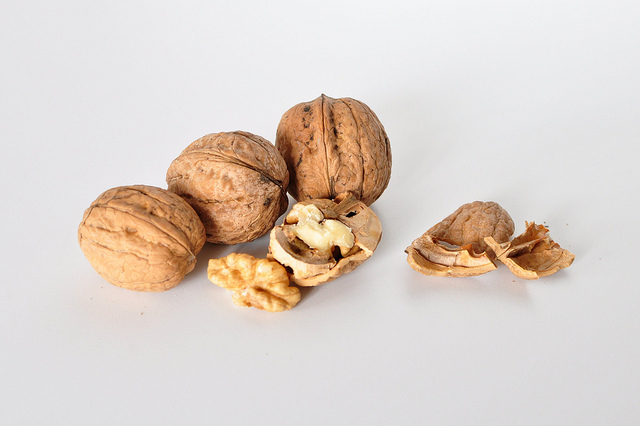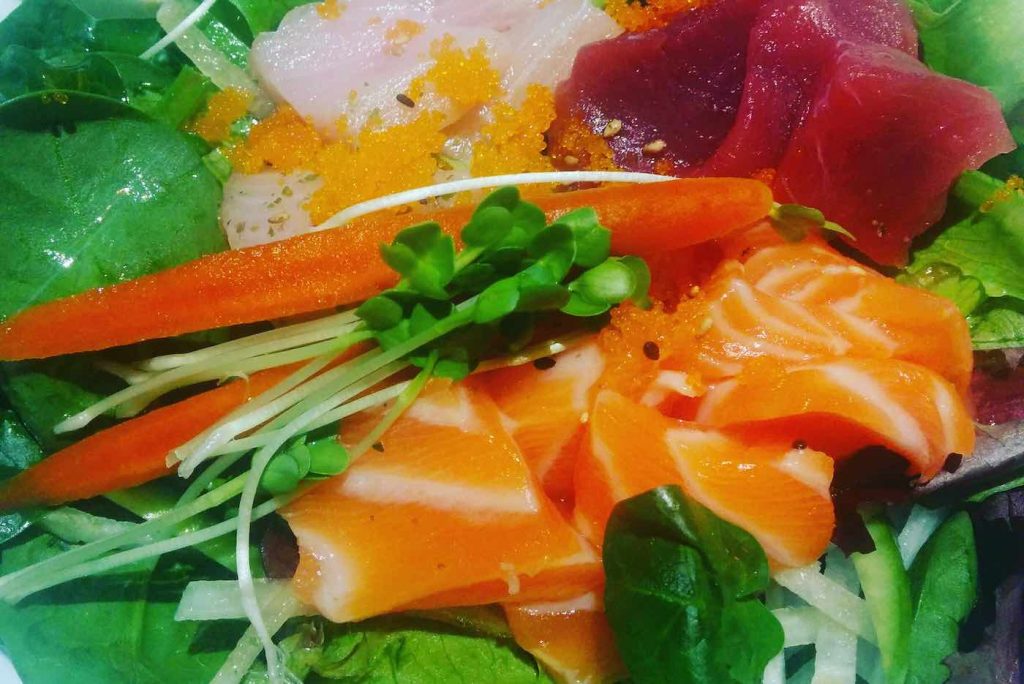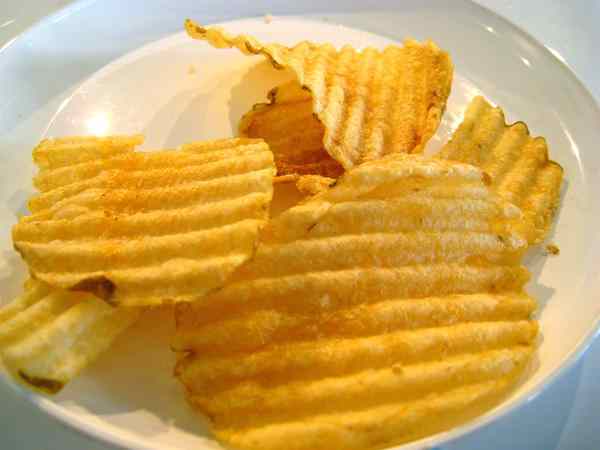According to an emerging tech company in Silicon Valley, there is no such thing as a universally-healthy food: What’s healthy for one person can be inflammatory for another.
With the rise of chronic disease worldwide, the diagnosis of his Father’s pancreatic cancer, and the reactive state of Western healthcare systems, it was clear to Naveen Jain that the epidemic of chronic illness was a problem worth tackling. He assembled a team of scientists to launch Viome, a company that can analyze your gut to understand what is causing inflammation, the root cause of many chronic diseases.
Viome calls itself the only company with the technology to help you identify—with a home test kit—what is actually happening in your gut. That’s where your micro-biome is mostly located, and trillions of microbes act together as part-power-converter; part-engine, and part-pharmacy.
If you want to optimize your health, avoid or heal chronic diseases, or know which foods are right for you, understanding your microbiome is the first step.
At-home test kits from Viome, provide a way to start your own data-gathering process. The company uses a high-resolution technology called meta-transcriptome sequencing to identify all the microorganisms living in your gut, from bacteria and viruses to fungi, yeast, parasites and bacteriophages. With this data, Viome recommends for you personalized foods and supplements to optimize your microbial function.
They don’t sell any supplements—or diagnose IBS or IBD—but medical science knows that various dietary interventions for IBD are determined by one’s GI tract microbiome profile. Modifying this profile can improve the effectiveness of diet therapies.
Here are 10 surprising discoveries Viome uncovered, copied directly from Naveen’s literature:
1. “Healthy” Food Isn’t Always Healthy
You might have been advised to eat your greens, and that greens and nuts are anti-inflammatory. The data show this isn’t always true.
Spinach, bran, rhubarb, beets, nuts and nut butters all contain Oxalate. We now know that Oxalate-containing food can be harmful, unless you have the microbes present that can metabolize it into a non-harmful substance.
30% of Viome customers lack the microbes to metabolize oxalates properly. In other words, “healthy foods” like spinach are actually not healthy for these people.
2. “Antioxidants” Aren’t Always Good for Everyone

Like Oxalates, Polyphenols in foods are usually considered very healthy, but unless you have the appropriate microbes that use specific polyphenols, you may not get the full benefit.
One example is a substance found in these foods called ellagic acid. Viome can detect whether your microbiome is metabolizing ellagic acid and converting it into urolithin A. Only the urolithin A has anti-inflammatory and antioxidant effects. Without the microbes to do this conversion, you will not benefit from the ellagic acid in foods.
Nuts, walnuts, raspberries, pomegranate, blackberries, pecans and cranberries all contain Ellagic acid. After analyzing tens of thousands of people, Viome reports that only about 50% of them benefit from eating more foods containing ellagic acid.
3. Are You Eating Too Much Protein?
When you think ‘high-protein diet’, you might think about Paleo, Keto and high-performance diets.
Protein helps build muscle and provide energy, but if you eat too much, it can cause inflammation and decrease longevity.
Viome analyzes the activity of your microbiome to determine whether you are eating too much protein that feeds protein-fermenting bacteria like Alistipes putredinis and Tanneralla forsythia, and if these organisms are producing harmful substances such as ammonia, hydrogen sulfide, p-cresol, or putrescine. These substances can damage your gut lining and lead to conditions like leaky gut.
4. Can “Healthy Foods” Exacerbate Heart Disease?

Choline in certain foods can get converted by bacteria into trimethylamine (TMA), which is associated with heart disease when it gets absorbed into your body and converted to TMAO.
TMA conversion doesn’t happen in individuals unless they have the appropriate bacteria in their microbiome. Viome can see the TMA production pathways, and many of the gamma-proteo bacteria that do this conversion.
What foods contain choline? Liver, salmon, chickpeas, split peas, eggs, navy beans, peanuts are a small sample. Before you decide to go full-on pescatarian or paleo, you may want to check if your microbiome is producing TMA with that salmon or steak.
5. Too Much Iron Can Cause Inflammation
Minerals like iron in your food can, in certain inflammatory microbial environments, promote growth of pathogens like Esherichia, Shigella, and Salmonella. Maybe it wasn’t just that raw chicken that gave you food poisoning, but your toxic microbiome that made you sick.
On the other hand, when you don’t have enough iron, you could become anemic, leading to weakness and shortness of breath. When thinking about how much iron is right for you, look at the data.
6. Stress and Anxiety Appear in Your Microbiome

Our gut and brain are connected via the vagus nerve. A large majority of neurotransmitters are either produced or consumed by our microbiome. Surprisingly, 90% of all serotonin (a feel-good neurotransmitter) is produced by your gut microbiome, not by your brain.
When you have a maladjusted microbiome that’s producing a large amount of toxins like hydrogen sulfide, the lining of your gut starts to deteriorate into what’s known as ‘leaky gut’.
Think of leaky gut as your gut not having healthy borders or boundaries. When this happens, all kinds of diseases can emerge. When the barrier of the gut breaks down, it starts a chain reaction, causing low-grade chronic inflammation — which has been identified as a potential source of depression and higher levels of anxiety, in addition to many other chronic diseases.
If you are working to reduce your stress levels, ensure your diet promotes a healthy microbiome.
7. Your Microbiome Affects Your Energy
If you want more energy, get your microbiome back into balance.
Your microbiome is responsible for calorie extraction, or creating energy, through pathways such as the Tricarboxylic acid cycle. Our bodies depend on the energy that our microbiome produces.
How much energy we get from our food is dependent on how efficient our microbiome is at converting the food into energy. High-performing microbiomes are excellent at converting food into energy—great for athletes who need extra energy, but suboptimal for those with sedentary lifestyles. And if the microbes can’t or won’t metabolize the glucose (sugar) that you eat, it will be stored as fat.
8. Have Joint Pain? Your Microbiome Can Tell You Why

Lipopolysaccharide (LPS) is a key pro-inflammatory molecule made by some of your microbes. Too much LPS can wreak havoc on your immune system and put it into overdrive. When your immune system goes on the warpath, your joints and other body parts often suffer collateral damage.
Perhaps balancing your microbiome is a better solution than reaching for the glucosamine.
Consider your microbiome as the top general of your immune army. It puts your immune system through basic training and determines when it goes to war. Ideally, your immune system wins the quick battle and gets some rest, but if your microbiome keeps it on constant high alert, the long, drawn-out war can result in chronic inflammation and chronic diseases.
Are you really getting older, or is your microbiome just making you feel older because it keeps giving warnings to your immune system, ultimately leading to chronic pain? If you have a condition ending in “-itis,” it’s possible that when you balance your microbiome, the inflammation from your “-itis” will be reduced.
9. The Link Between Low Stomach Acid and Chronic Disease
The acid in your stomach protects you from the bacteria in your mouth and the parasites and fungi in your food.
When you have low stomach acid, bacteria from your mouth bacteria makes it down to your GI tract. This invasion is associated with, and a risk factor for, autoimmune disease and inflammation in the gut.
We’re beginning to learn that low stomach acid is perhaps one of the major causes of chronic disease. What kinds of things cause low stomach acid? Stress and antacids like Nexium, Zantac and Prilosec.
10. Carbs Can Be Protein Precursors

As long as your microbiome is up to the task, carbs aren’t as bad as you might think. The key is whether your microbiome can transform the starches you eat into amino acids.
Our microbiome comprises 20% of our Branch Chain Amino Acids (BCAAs), and it will adapt to make these vital BCAAs for us in almost any way it can.
Essentially, your microbiome is hooking up carbons and hydrogens into different formulations of BCAAs, depending on what you feed it. The microbiome is excellent at adapting and pivoting based on your diet and environment.
So, given all this data, you can understand how prioritizing the health of your microbiome is essential. For anyone who wants to invest in a test kit that will uncover which foods work best for your body and receive personalized recommendations, learn more at Viome.com.
Viome told GNN that its technology allows them to see how active any bacteria, archaea, eukaryotes, and viruses are in your gut and what metabolic and signaling pathways are being activated and to what degree – in other words, what your microbes are doing. Viome says, “No other company can see with molecular-level precision what’s going on in the gut microbiome from this functional viewpoint.”
Viome says that it sells products at “close to cost” so they can help as many people as they can to “make illness optional”. Learn more at Viome.
(Any purchase at Viome will also benefit GNN with a commission on every sale.)
– Photo by jpalinsad360, CC license





















I have tried to eat healthy but at a relatively young age, I have been having joint pain. I hope this technology works well enough to help.